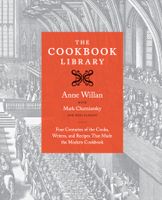With a few notable exceptions, fifteenth-century recipes remain typically medieval, pungent with spices, tart with verjuice and vinegar,
and invariably cooked in at least two stages: roasted and then simmered in broth, for example, or fried in lard and then simmered in broth. The aim may have been partly hygienic, but the effect was the creation of layers of flavor that can be astonishingly complex.
Throughout Europe, spices in impressive variety and generous quantity continue to be the mark of the sophisticated, affluent table. By the end of the century, glimpses of a new style appear in the very first printed cookbook, De honesta voluptate et valetudine (Rome, 1474), which contains recipes by Maestro Martino, a leading cook from Como, in the Italian Alps. Martino refers to peperata (a peppery sauce) and to soffrito (a zesty chopped meat dish, today a mix of diced vegetables used for flavoring). With recipes like sage leaves dipped in batter, he heralds the simpler, lighter cooking that began in Italy and was to sweep Europe in the next century and a half. He emphasizes more modest ingredients available to a wider audience in dishes such as a salsa of grape leaves, or herbe con latte damandole (greens in almond milk).

